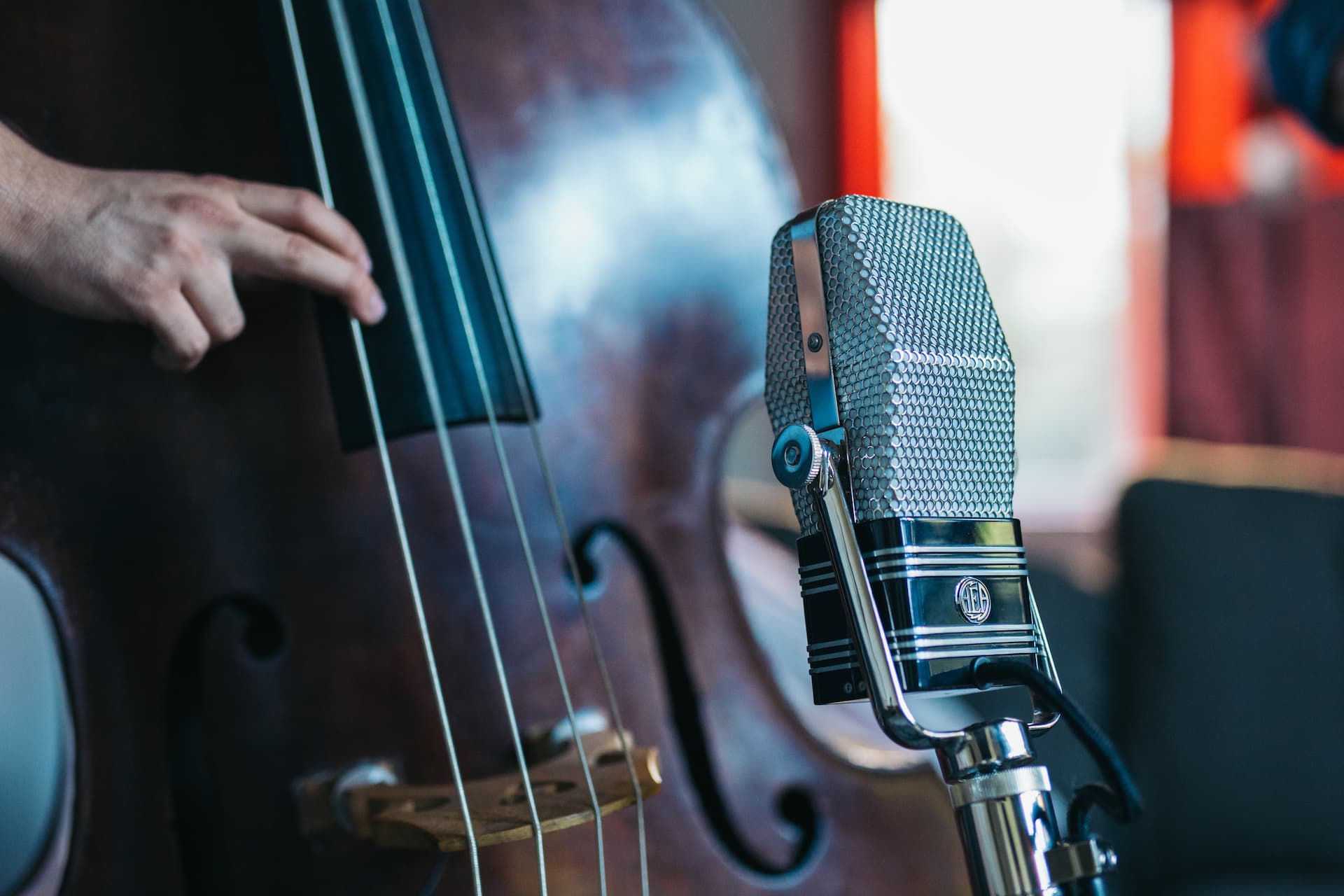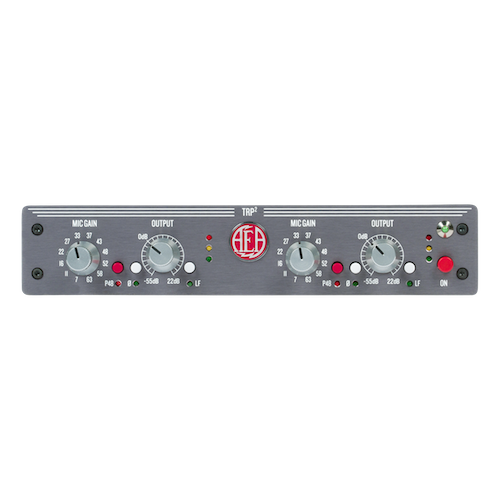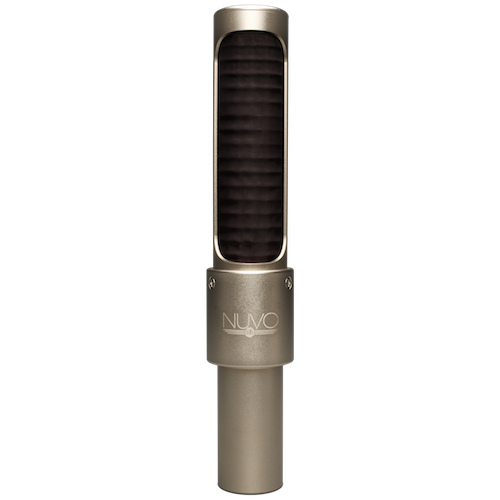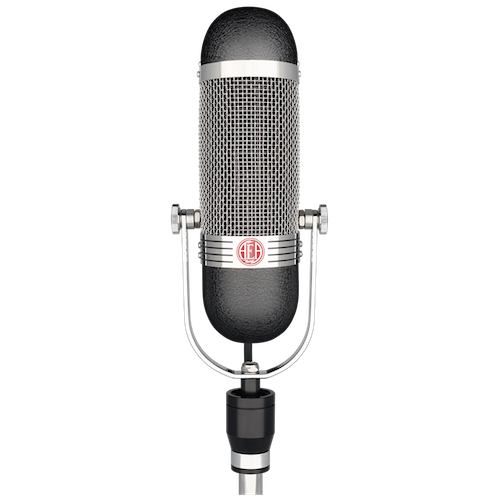Since the 1930’s, the R44 has proven incredibly adept at recording string instruments and sections. The upright bass, for one, is complemented by the R44’s detailed mid-range, extended low-end, and figure-of-8 polar pattern.
How To Record Double Bass and Cello With the R44
Audio Samples and Techniques Using the AEA R44

Close Miking
Try positioning the R44 1 to 4 feet in front of the instrument where the low-end response is most ideal. Keep in mind that instruments within 6 feet of the R44 benefit from its pronounced proximity effect. Within that range, moving the R44 closer to the instrument will accentuate the bass, and pulling it away will reduce that effect. For more attack, move the R44 up vertically towards the player’s bow or plucking fingers. For less attack and more overtone, lower the R44 so it is parallel with the sound hole.
Sections, Ensembles, and Orchestras
The versatile R44 excels at recording string sections, quartets, orchestras, and other ensembles from a distance. From as far as 20 feet away, the R44 captures detailed, balanced sound of an instrument section and supplements it with massive room tone. When arranged 6 to 10 feet from the source, in Blumlein configuration, two R44s create a massive, detailed room image without the need for any support microphones.










